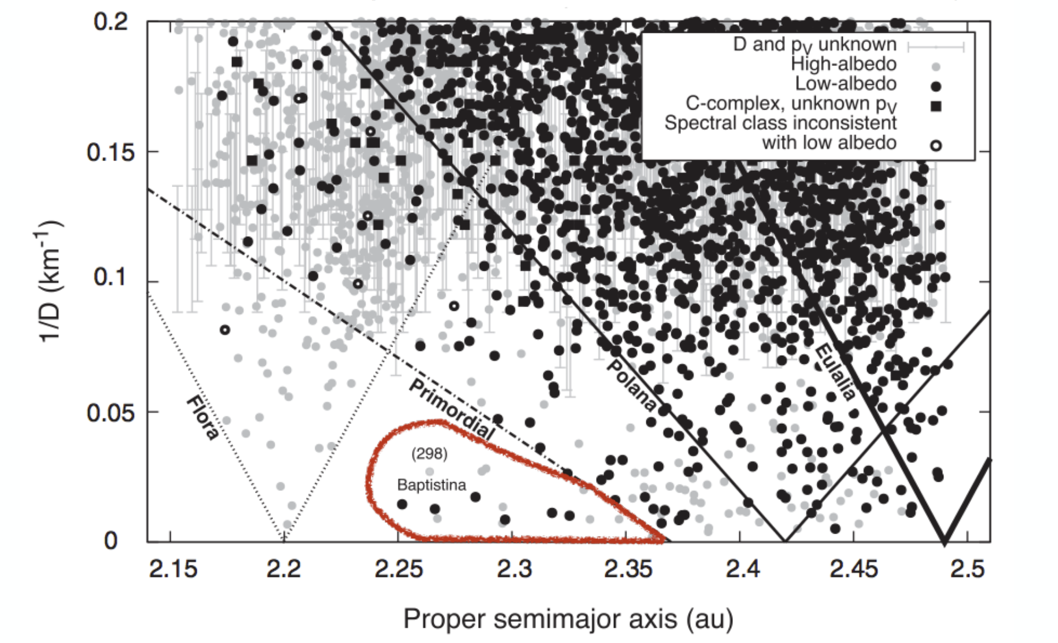
Dr Chrysa Avdellidou (Observatory of Nice)
Talk Outline
One of the fundamental questions in planetary sciences is how the terrestrial planets form from the protoplanetary disc. However, the stages of the planetesimal accretion directly from the protoplanetary disk, before the formation of planets, is hidden from our telescopes. A large number of planetesimals survived the planetary formation era and are today in the main asteroid belt. This population suffered collisional events throughout the age of the Solar System that broke them up creating clusters of fragments, the asteroid families. There are traditional methods to identify the asteroid families in the Main Belt. However these methods are sensitive to young families, while old or very dispersed ones need another approach. In this seminar I present a novel method to identify old asteroid families and the first results of our team by identifying 3 of them in the inner Main Belt.
Studying the asteroid families we will have the opportunity to look inside the original planetesimals, understand their composition, and their internal structure. In addition, cleaning the main belt from the asteroid families we can identify the surviving planetesimals. A fundamental input to family identification methods are the physical properties of asteroids such as their diameters, albedos and spectra.
If you are interested in physical properties of asteroids please visit our database: Minor Planet Physical Properties Catalogue (mp3c.oca.eu).
About the Speaker
I am a planetary scientist and my work focuses on the physical properties of small bodies and the most violent process that acts on them, impacts. I studied Physics at the Aristotle University of Thessaloniki (Greece) and in 2016 I obtained my PhD on experimetnal hypervelocity impacts from the Impact Lab of the University of Kent (UK).
I was a Research Fellow at ESTEC/ESA where I studied the meteoroid impacts on the lunar surface. In 2018 I obtained a Research Fellowship at the Observatory of Nice in order to work on the asteroid physical properties and expand the local database, which is currently the largest in the world.
In addition I study and characterise the asteroid collisional families.I am a collaborator at the OSIRIS-REx sample return space mission (NASA) to the NEA asteroid Bennu and at MIRS instrument (CNES) of the Martian Moon eXploration sample return mission to Phobos (JAXA).